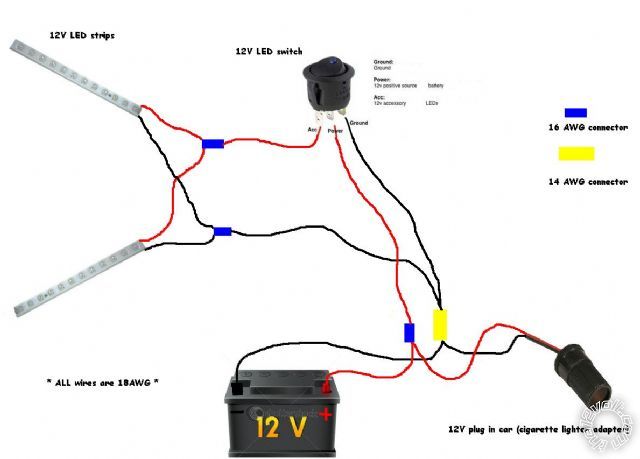The fusing is to protect the downstream wires (to the next fuse). [The LEDs themselves can't be fused - well, generally not for any practical purpose.]
IE - if a +12V wire shorts to GND, the fuse should blow before the wire get too hot and either burns your car down or kills you with insulation etc fumes.
If you car's cig lighter fuse is 15A, then it will have wire rated for at least 15A. Same if 10A (ie, at least 10A wire).
If it's 10A and you use 10A or greater cable/wire to the LEDs, then the 10A cig fuse protects it.
But you might use 1A or 5A cable (assuming the LEDs take less) in which case that cable can flame before the 10A fuse blows, so you'd want a fuse rated the same or less than the cable.
If you are not using anything else on that circuit - eg, not using a cig lighter or some other plugin (mobile or GPS charger etc), you could change the original fuse - ie, from 10A to 1A or 5A etc. Not that 1A fuses may exist for your car - ie, in general, the smallest ATS (aka blade) fuse is 3A; mini-ATS is 2A; micro-ATS is 5A - but there are others, or you might decide to use 5A cable (or 3A etc).
If I were designing and the LED total is 2A, I could use "flexible light duty" 26AWG (rated for ~2.2A).
But IMO its insulation is too thin (to be physically robust for a vehicle), whereas I like the fig-8 red & black "medium duty 50VDC" rated for 5A since I often drag both +12V & ground (eg, aux batteries, audio, PC supplies) when using chassis/body ground is a hassle or unreliable, or I want a clean supply direct from the main battery (as is common for most audio and mobile computing fans). And it thus works out to be the same price as 2 lengths of 26AWG (but with half the resistance and hence half the voltage drop).
If it were only a short or convenient or impromptu connection, then burger it - any cable 26G or larger.
The latter underpins the other form circuit "protection". Cable fusing is
electrical protection against an overload or short.
If the short can never happen - ie, it is
physically protected - then the fuse isn't needed. (Many DC distribution systems are unfused.)
As to overloading a physically protected unfused cable, the equipment fuse(s) should handle that. And since the cable rating meets or exceeds the maximum demand from the load(s), the cable is protected from overload.
And for recalcitrant loads that don't but should have their own
protection fuse - eg, big amplifiers (2kW and above) - then you have to supply it. Then the same applies - since the cable rating equals or exceeds the fuse rating, that fuse protects the cable from overload. Mind you, why not move it to the upstream (battery) end of YOUR cable instead (and hence protect the cable and load)?
Apologies for the lesson on fusing, but provided the "protection" aspect is understood - ie, physical or electrical protection; and cable fusing is to prevent
heat, fire or smoke in downstream's "weakest wire" (ie, fuse for the smallest wire; and don't forget GND!!), then at least it demystifies "protection" (which may be fusing) it so it becomes a mere PITA trying to decide what size to use...
 Printable version
Printable version















